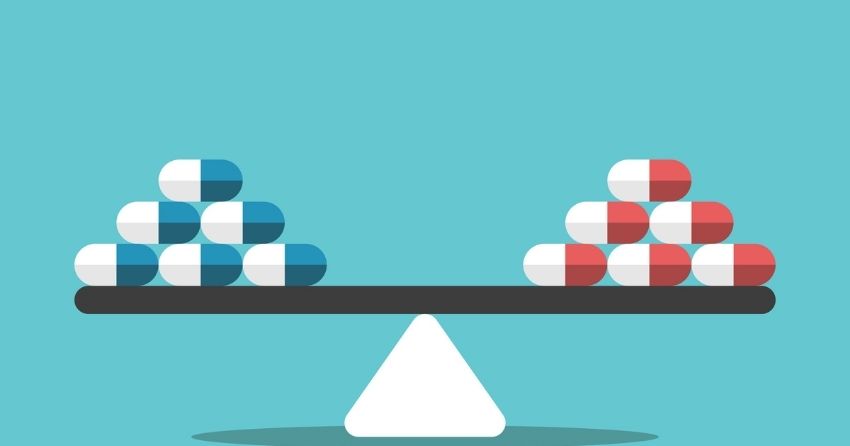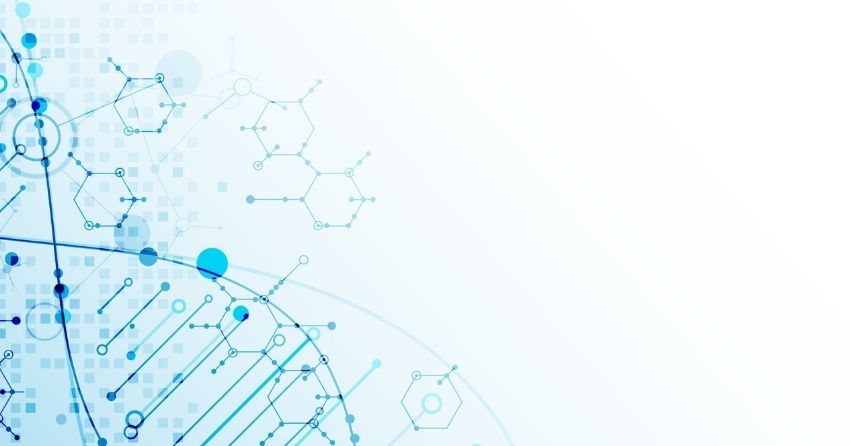NR vs. NMN: Battle of the NAD+ Precursors

Nicotinamide adenine dinucleotide (NAD+) is one of the molecules we all learn about in our high school biology classes. The thing is, it’s so ubiquitous that it’s boring and gets tossed into the trash cans in our minds once we’ve memorized it to answer a question on an exam. This compound takes part in the most basic yet essential processes, like how cells make energy. And that’s precisely why there’s so much research on NAD+ and precursors that boost its levels. Since NAD+ has its things in so many processes, if its levels drop or become dysregulated, which happens in poor health and aging, the future doesn’t look exceptionally bright for that individual.
For many years, the NAD+ precursors nicotinic acid and nicotinamide were researched and utilized to treat pellagra — a disease caused by a vitamin B3 deficiency that raged across Europe and the USA in the 1900s. As the knowledge of NAD+ and its role in metabolism and cellular reactions expanded, NAD+ and its precursors gradually became more intensively studied in modern medicine, especially in the aging field. But in the last two decades, a couple of NAD+ boosting molecules called nicotinamide mononucleotide (NMN) and nicotinamide riboside (NR) have caught fire for their potential in supporting healthy aging and longevity.
How NMN and NR Make NAD+
Through the past few decades, an immense investigative effort has culminated in the map of NAD+ synthesis, which is complex and has many entry points. This vital molecule can be made from tryptophan via the kynurenine pathway, nicotinic acid (also known as vitamin B3) in the Preiss-Handler pathway, and the salvage and extracellular recycling pathways, which is where NMN and NR come in.
These two pathways are potent approaches to boost cell levels of NAD+ in a fast and efficient manner. Within the cell, nicotinamide is metabolized into NMN through an enzyme called nicotinamide phosphoribosyltransferase (NAMPT) and then by NMNATs into NAD+.
There is intracellular NAMPT (iNAMPT) and extracellular NAMPT (eNAMPT). In addition to the intracellular NAM and NMN for the salvage pathway, extracellular nicotinamide, NMN, and NR also participate in this pathway. Extracellular NMN is typically converted into NR or NAM by enzymes called NADases, of which few have been discovered (i.e., CD38/CD157 and CD73).
While the relatively small NAM molecule can diffuse into cells, the larger NR molecule is transported into the cell via the equilibrative nucleoside transporter (ENT) family. NMN has its own specific cellular transporter called SLC12A8. As NAM enters the cell, it participates in the salvage pathway directly. NR that gets taken up by the cell is converted back to NMN by nicotinamide riboside kinase 1 or 2 (NRK1/NRK2), then further converts to NAD+.
NAD+ levels are not always raised through direct absorption of NR or NMN. It turns out that the microbes in our digestive tract -- the gut microbiome -- are converting NR and NMN into a different molecule known as nicotinic acid mononucleotide (NaMN), which gets shot over to the kynurenine pathway.

Which Is Better, NR or NMN?
NAD+ augmentation has been shown to support healthy aging in animal models in the lab, such as the roundworm Caenorhabditis elegans, the fruit fly Drosophila melanogaster, and mice. Backed by this preclinical data, many active human studies are evaluating how NAD+ precursors support healthy aging in people.
Preclinical studies using NMN supplements have shown support for healthy aging, including aiding vascular health and weight management. Other studies have shown that NMN supplements increased NAD+ levels to support metabolic and brain health as well as healthy aging. For example, mitophagy, the mechanism by which damaged cellular power generators called mitochondria are targeted and degraded, is essential for mitochondrial balance and healthy aging. The fact that NMN and NR induce mitophagy was first reported in 2014 and has since been reported in cell culture and animal models by several research labs. Impeded mitophagy has also been suggested to be implicated in brain health and healthy aging. So, enhancing mitophagy with NMN supplements might be an effective strategy to boost cognitive health.
Lots of research have also endorsed the ability of NR to support healthy aging and brain health. NR similarly supports healthy aging to NMN when administered to C. elegans, D. melanogaster, or mouse models of a series of premature aging. While there is a likelihood of the involvement of different pathways dependent on NAD+, improved DNA repair and mitophagy are among the mechanisms supporting health via NAD+. NR supplements have been shown to support healthy metabolism and weight management in mice. To note, parallel studies in cells, worms, and mice suggest that NR and NMN show similar effects in elevating NAD+ and supporting healthy aging.
Nicotinamide Mononucleotide vs Nicotinamide Riboside: What’s the Difference?
Besides differing by a small collection of atoms called a phosphate group, NMN and NR sit in the same pathway and can be converted into each other. Ultimately, NMN, and not NR, is the direct precursor to NAD+.
In people, NMN is well-tolerated at lower doses, but high dose administration may be detrimental. In mice, a 12-month long-term administration of NMN in the water did not have any harmful effects. In healthy Japanese men, a single oral dose of up to 500 mg NMN was well-tolerated and safe with no significant side effects. Moreover, more clinical trials with NMN are needed to identify appropriate dose ranges rigorously and to include both males and females. Some potential side-effects of NMN have been proposed, especially concurrent with high dose administration.
Compared with NMN, there are more finished clinical trials on the safety and bioavailability data on NR. One clinical trial on the effects of NR on blood NAD+ metabolism in humans revealed that NR was bioavailable, safe, and well-tolerated in humans in doses up to 1000 mg. A randomized clinical study from 2018 on the clinical bioavailability of NR concluded that NR displayed few side effects and may be considered safe if administered in a dose of 1000 mg/day.
Are There Other Ways to Boost NAD+ Levels?
By no means is the field of NAD+ synthesis stagnant or lacking innovation. Consistently, new compounds enter the fray. Some of these strategies are focused on modulating the NMN-generating enzyme NAMPT. Scientists have found that by increasing levels of eNAMPT into the circulatory system of aged mice, NAD+ levels increased across multiple tissues.
Research has identified two molecules that are nearly identical to NMN and NR. A version of NR called reduced NR (NRH) also shows an excellent profile as a future NAD+ booster. This reduced form of NR, which carries an extra hydrogen atom, is more powerful and a faster precursor in NAD+ synthesis than NR alone. Even though the difference between NR and NRH is tiny, NRH can significantly increase NAD+ concentrations from 2.5 to 10 times over the established control values. So, NRH appears to exceed the levels of NAD+ synthesis more than NR or NMN, with no adverse reactions noted.
There’s also a reduced version of NMN called NMNH. Similar to NRH, NMNH also showed much more potency over its oxidized form, increasing NAD+ levels faster and twofold compared to NMN. Research has shown that NMNH can cause a swift escalation in NAD+ levels in the kidney, liver, muscle, brain, brown adipose tissue, and heart.
NRH and NMNH are both believed to enter the cell via equilibrative nucleoside transporters. The NRH molecule can enter the cell and perform NAD+ synthesis in cells where it’s converted to NMNH and eventually NAD+. But NMNH outside of the cell must first undergo a modification that removes a phosphate group to turn into NRH before entering the cell and then taking the same intracellular NAD+ pathway as NRH. Even though NRH and NMNH have promising outlooks, further research and human trials should be conducted to establish a firm conclusion.

Should I Take NR or NMN?
The jury is out on whether to take one of these NAD+ supplements over the other. And many questions remain about NMN and NR; for example, we don’t know too much about which organs take up these precursors to induce NAD+ synthesis and whether NR or NMN supplements block other biological functions. Human studies are needed to determine the various questions about the emerging trend of NAD+ precursors and how to substantially manipulate their levels to influence and possibly improve human health.
The large amount of work thoroughly looking into the potential use of NAD+ for clinical treatment of disease in recent years illuminates the vast potential of NAD+ replenishment. There is likely a hierarchy of NAD+ precursors concordant with the degree of efficacy displayed by the different compounds to replenish cellular NAD+ levels. Researchers have yet to establish the relationship between NAD+ precursors and their effects on people. Although a lot of work remains, NAD+ may hold a vital key to healthy aging in the human population.
Visit our shop to choose the right NMN Supplement for you
References:
Khaidizar FD, Bessho Y, Nakahata Y. Nicotinamide Phosphoribosyltransferase as a Key Molecule of the Aging/Senescence Process. Int J Mol Sci. 2021 Apr 2;22(7):3709. doi: 10.3390/ijms22073709.
Okabe K, Yaku K, Tobe K, Nakagawa T. Implications of altered NAD metabolism in metabolic disorders. J Biomed Sci. 2019 May 11;26(1):34. doi: 10.1186/s12929-019-0527-8.
Palmer RD, Elnashar MM, Vaccarezza M. Precursor comparisons for the upregulation of nicotinamide adenine dinucleotide. Novel approaches for better aging. Aging Med (Milton). 2021 Aug 4;4(3):214-220. doi: 10.1002/agm2.12170.
Reiten OK, Wilvang MA, Mitchell SJ, Hu Z, Fang EF. Preclinical and clinical evidence of NAD+ precursors in health, disease, and ageing. Mech Ageing Dev. 2021 Oct;199:111567. doi: 10.1016/j.mad.2021.111567.
Yoshino J, Baur JA, Imai SI. NAD+ Intermediates: The Biology and Therapeutic Potential of NMN and NR. Cell Metab. 2018 Mar 6;27(3):513-528. doi: 10.1016/j.cmet.2017.11.002.







